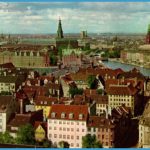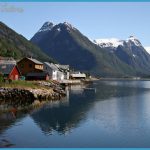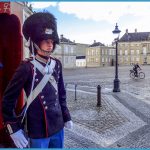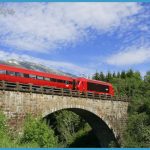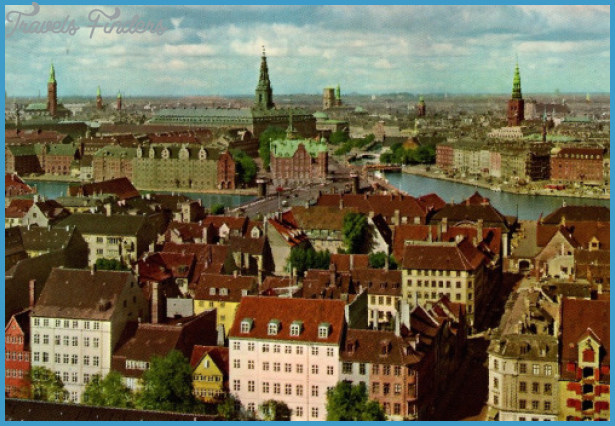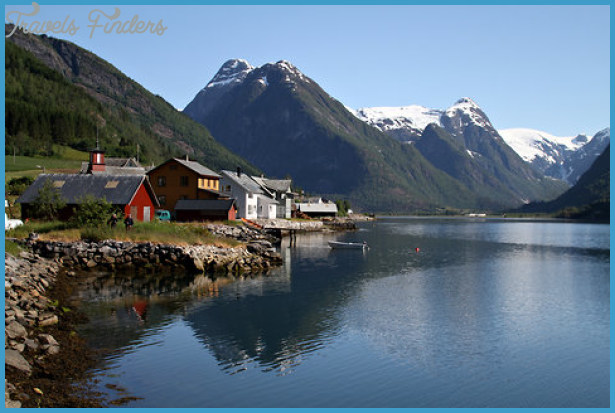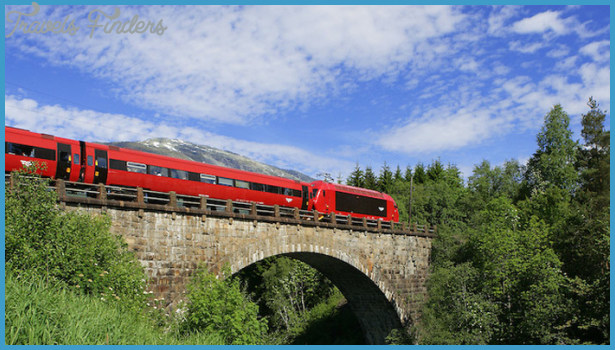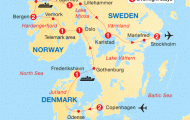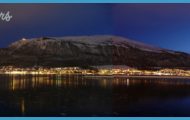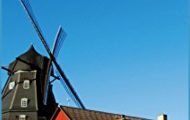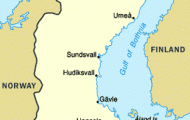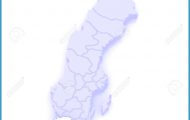In the gardens, NW of the museum, is a bronze group, The Wrestlers (Baltes-pannare, 1867), depicting an old Nordic form of wrestling in which the contestants were bound together at the waist.
To the S of the National Museum a bridge leads to the attractive island of SKEPPSHOLMEN, formerly occupied by the Swedish navy, where are to be found the Skeppsholm Church (1842), the East Asian Museum (Far Eastern art) and the Modern Museum (20th c. art), with a Museum of Photography. Moored on the W side of the island is the sail training ship Chapman, now a youth hostel (closed in winter).
Along the N end of KungstradgSrden runs Hamngatan, now regarded as Stockholm’s main street. There are magnificent views of the city from the rooftop restaurant of the NK (Nordiska Kompaniet) department store. At No. 4 Hamngatan is the Hallwyl Palace,
Klarakyrka and tower blocks in the Hotorg with a facade showing Spanish inspiration and an interior in fin de siecle style; it is now a museum, and is also used for theatrical performances. In Berzelius Park, named after the famous chemist, J. Berzelius, is a popular restaurant, Berns Salonger famous for its food and its musical performances. In Nybroplan stands the Royal Dramatic Theatre (Kungl. Dramatiska Teatern), opened in 1907.
At the W end of Hamngatan is Stockholm’s new central feature, Sergeis Torg, with a tall modern fountain and the House of Culture (Kulturhuset by P. Celsing, 1974), containing a library, reading rooms and a theatre. Adjoining is the New Parliament Building {Riksdagshuset, 1971). Sergelsgatan, a pedestrians-only street with numerous shops and an underground market hall, runs to the Hdtorg a market is held here each summer. On the W side of the square is the Concert Hall (Konserthus, 1962), home of the Stockholm Philharmonic Orchestra, in which the presentation of the Nobel Prizes takes place. In front of it stands the Orpheus Fountain by Carl Milles (1936). Kungsgatan, to the N, one of Stockholm’s principal shopping streets, has the PUB department store and the Kungstornen (King’s Towers), two 17-storey buildings. The broad Sveavag runs NW from the Concert Hall, passing on the left the Adolf Frederikskyrka (1774), which contains sculpture by J. T. Sergei (d. 1814) and a monument to the French philosopher Descartes, who died in Stockholm in 1650 (his remains were taken to Paris in 1666). Toward the far end of the street are the Commercial College and the Municipal Library (Stadsbiblioteket), and, at the end, the Wenner-Gren Research Centre (1961). From the Library Karlbergsvagen runs Eto Karlberg Castle (17th c.), now a military academy, on the lake of the same name.
Parallel to Sveavagen is Drottninggatan, another busy shopping street. At No. 85, once the home of the dramatist August Strindberg (1849-1912), is the Strindberg Museum. At the N end of the street are the main buildings of the University, founded in 1878. To the W stands the Klarakyrka, with a spire 104 m (340 ft) high; in the churchyard is the grave of the 18th c. poet, C. M. Bellman. Beyond this is the Central Station (with a Model Railway Museum).

